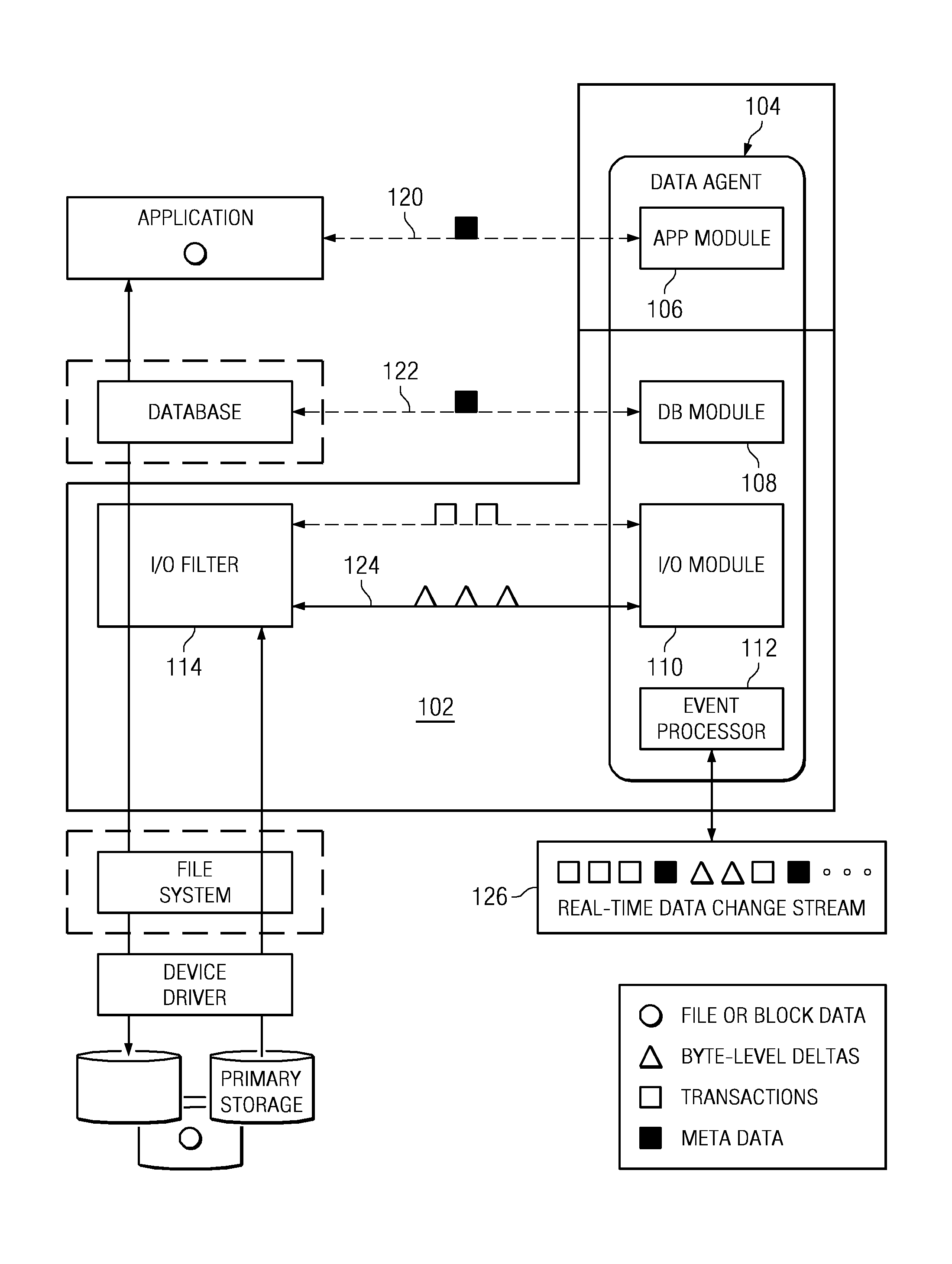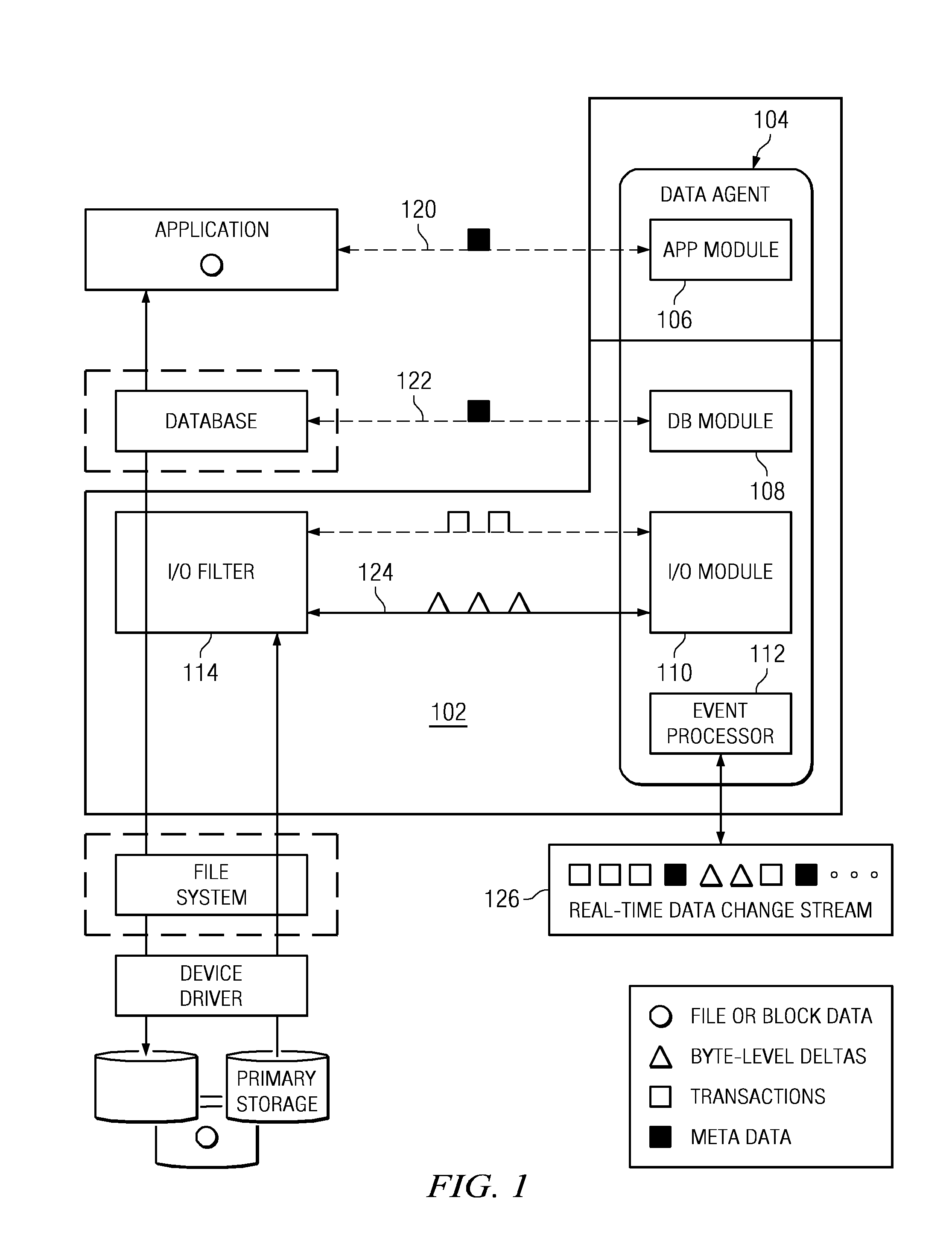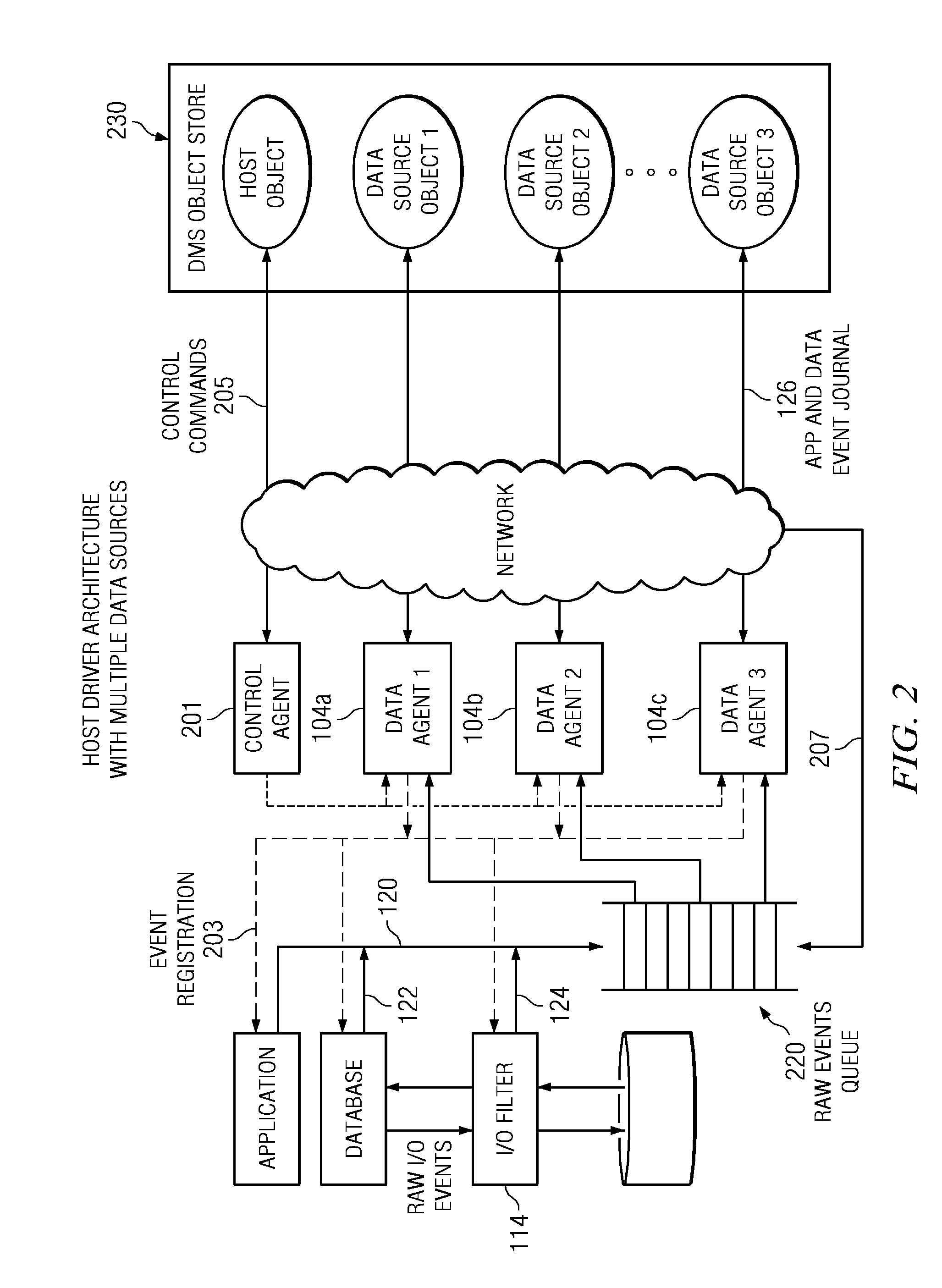Recovering a database to any point-in-time in the past with guaranteed data consistency
a database and data consistency technology, applied in the field of restoring a database to any point-in-time in the past with guaranteed data consistency, can solve the problems of inaccessibility, incorrect or corrupted data sets, and inability to eliminate or minimize data loss,
- Summary
- Abstract
- Description
- Claims
- Application Information
AI Technical Summary
Benefits of technology
Problems solved by technology
Method used
Image
Examples
Embodiment Construction
[0058]The subject matter herein may be implemented in a data management system (DMS) such as the system described in U.S. Ser. No. 10 / 841,398, filed May 7, 2004, U.S. Ser. No. 11 / 123,994, filed May 6, 2005, or U.S. Ser. No. 11 / 185,313, filed Jul. 20, 2005, the disclosures of which are incorporated herein by reference.
[0059]The following provides additional background information concerning database system functionality and operations.
[0060]A database stores its information in both its log and binary files. When update requests are received, the updates are first entered into the log files in the form of a redo journal (this is known as write-ahead log), and the actual binary data modifications occur in the system memory, which may be flushed into the binary files in the persistent storage in a later time for better performance.
[0061]The flushing of the binary updates from system memory into binary files would cause the binary file(s) to be consistent with their associated log file(s...
PUM
 Login to View More
Login to View More Abstract
Description
Claims
Application Information
 Login to View More
Login to View More - R&D
- Intellectual Property
- Life Sciences
- Materials
- Tech Scout
- Unparalleled Data Quality
- Higher Quality Content
- 60% Fewer Hallucinations
Browse by: Latest US Patents, China's latest patents, Technical Efficacy Thesaurus, Application Domain, Technology Topic, Popular Technical Reports.
© 2025 PatSnap. All rights reserved.Legal|Privacy policy|Modern Slavery Act Transparency Statement|Sitemap|About US| Contact US: help@patsnap.com



